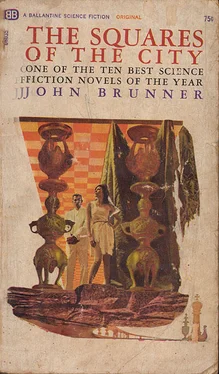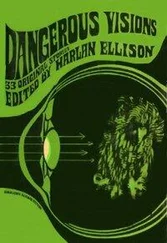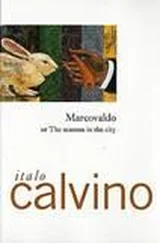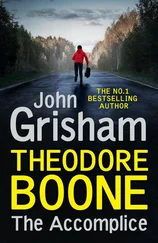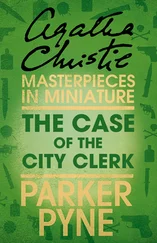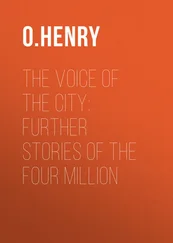Something that did make sense, though, was an impression that had just come to me—an impression that for reasons I could not fathom she was trying to approach me on an unemotional level, as a man would approach another man, resolutely not capitalizing on her womanly charm.
“All right,” I said with sudden decision. “One hour.”
Relieved, she rose and led me out of the hotel; before a huge Pegasos sedan parked at the curb, she took keys from her handbag and indicated that I should get in. I hesitated, remembering the possibility that had struck me yesterday evening—that I might be being watched, perhaps for my own protection. I was going to raise that matter with Angers when I went down to the traffic department this morning.
Noticing my hesitation, she gave a faint smile and held out her tiny gold key chain to me.
“You may drive us if you prefer,” she suggested. I shook my head and got in.
The great car moved as though on rails; we hardly seemed to have left the hotel before we were on the outskirts of Vados, in what I knew to be a Class A residential district, with small but palatial houses set in great blossom-crowded gardens. We turned aside from the main road down an avenue lined with feathery-crowned palms; Senora Posador felt for a button on the dash and pressed it. There was a hum. The wrought-iron gates leading into the driveway of one of the houses ahead swung back as though by magic, and the car slid between them. She pressed the same button again; the gates closed silently.
We did not, however, go all the way along the driveway to the house. Instead, we halted before a clump of dark green bushes, into the middle of which a narrow path led.
“We have arrived,” said Senora Posador with a faint smile.
Puzzled, I got out and looked about me. “This way,” she called, and disappeared down the path between the bushes. I followed circumspectly and was surprised to find, completely hidden by the bushes, a small prefabricated shed. Or perhaps more a blockhouse than a shed; the walls were at least four inches thick. A TV antenna reached up from the roof, and a thick power cable was slung over the branch of a nearby tree, leading toward the house.
Senora Posador opened a padlock that held the door fast, and I followed her inside.
At first I could see almost nothing; the only light came from one small barred window. Then she turned a switch and two fluorescents came to life. I looked around the interior. There was a chair, padded, relaxing; a twenty-eight-inch television set; and, of all things, a VERA—a full-size video recorder with two-inch tape and spools a yard wide.
“Please be seated,” said Senora Posador calmly. I perched on one arm of the chair and watched her as she crossed to the recorder. In a moment the spools began to hum, and the big screen lit up.
“I will show you the program in which you appeared last night,” she murmured. And at the same moment Cordoban appeared on the screen, introducing the program.
I watched in puzzlement for a while, until I was satisfied that this was indeed a recording of the same program, and then looked across at Senora Posador.
“I don’t quite see what you’re trying to show me,” I said. “I’ve seen all this before, in the studio.”
She switched off the recorder and spun the spool back to where she had cut it in before answering. Then she spoke without looking directly at me.
“There are few places in Vados where it is safe to watch the television, senor. This is one of them. I have here a device which I think in English is called a ‘blinker.’ Our name for it means ‘sieve.’ I have just played you that recording without the blinker.”
“A blinker, so far as I’m concerned,” I said, “is one of those gadgets that you can set to shut off commercials. You haven’t any advertising on that program.”
“No?” she said, and gave her wan little smile again. “Did you ever hear of a technique called subliminal perception?” I frowned. “Yes, of course,” I said shortly. “You accept that that was a recording of the same program as the one you appeared in last night?” I nodded. “It certainly seemed to be the same.”
“Then watch this, Senor Hakluyt. Watch carefully.”
She spun the spool forward to the first of the series of shots taken in the shantytowns and let it play over, all the time keeping her finger on a small pause switch beside the playing head. “It is sometimes difficult to find what one is looking for,” she murmured. “Ah! There!”
The picture on the screen was somehow familiar, yet it was not anything I could consciously remember seeing either last night or in the playback I had seen a few moments ago. It depicted the interior of a squalid hovel. The central character was a colored man stripped from the waist down. With him were a group of children, all aged about twelve. I won’t take the space to describe what they were doing. I had to turn my head away after a few seconds.
“It is no good trying to ignore this, senor,” said Senora Posador coolly. “Please look at it more closely.”
I got off the arm of the chair and approached the screen. There was something odd about the picture, certainly…
“It’s not a photograph,” I said suddenly. “It’s a drawing.”
“Or, more precisely, a painting,” she agreed. “Please watch again.”
The spools hummed; she kept her finger on the pause switch, and in a moment came to another shot that was hauntingly familiar like the first. This one showed a small boy, actively encouraged by his mother, defecating on a picture. About all that one could see clearly of the picture was that there was a cross in it, and toward the top of the cross was what might have been a halo.
“Are you a practicing Christian, senor?” asked Senora Posador.
I shook my head.
“Most Vadeanos are Catholics. They would at once recognize that as a copy of the picture of the Crucifixion which hangs over the high altar in our cathedral. It is by one of our most distinguished artists.”
She let the spools run forward a little more. The next picture at which she stopped showed a man with a whip as big as a threshing flail, lashing the naked back of a little girl. After that the one with the Negro was repeated, the children still in their obscene postures; and so through again in order.
“I doubt if I need show you any more of this sequence,” said Senora Posador quietly. “Let us contrast these pictures with what was interspersed in your interview.”
The tape spun forward some distance. Cordoban, on the screen, said, “Aqui esta el senor Hakluyt,” I came smiling into the range of the camera, and she stopped the spool.
I saw myself—or at any rate a recognizable likeness of myself—dipping my fingers for holy water into the font at the entrance to the cathedral. Another few yards of tape: I was shaking hands with el Presidente, and then in a few more moments I was kneeling before the bishop I had seen coming out of the elevator at the TV studios. Finally, before the sequence began to repeat, I was shown—this was so crude it nearly made me laugh—as an angel in a long white gown, holding a flaming sword over the monorail central, from beneath which little figures ran like frightened ants.
“That is enough, I think,” said Senora Posador. She shut off the recorder. “Now I think you understand, no?”
Confused, I shook my head. “I do not,” I said. “Not at all!”
She pushed aside a number of empty tape-cartons and lifted herself up on the bench beside the recorder, slender legs swinging. She took out one of her black cigarettes and lit it thoughtfully.
“Then I will do my best to make it clear,” she said offhandedly. “You know, you say, what subliminal perception is?”
Читать дальше
